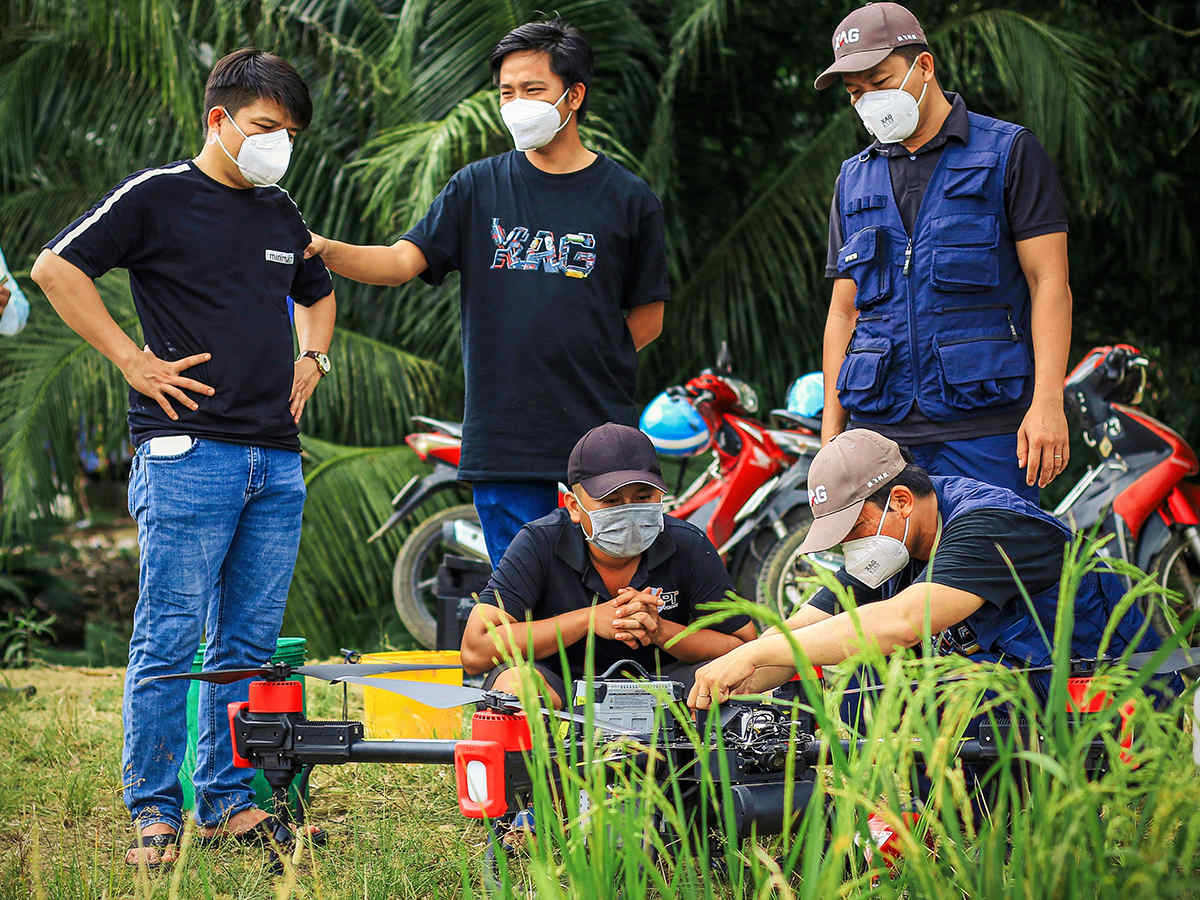- Home
-
Products
- News
- About
- Become a Distributor
Global - English

The April 28th World Day for Safety and Health at Work is established by the International labor organization to promote the prevention of occupational accidents and diseases globally. Among all the occupations, farm workers of the traditional age are at high risks of injuries and diseases, because they are easily exposed to chemical use and prolonged sunlight. The introduction of drone in agriculture has created a safer working environment when it comes to crop spraying and fertilization. But proper drone operations should be followed to avoid unnecessary accidents.
Now as the busy farming season comes in April, to farm better with XAG agricultural drones, a guideline is created for every next-gen farmer to work with safety and healthiness.

Before field work
Transportation
When it comes to high-frequency operation, it may involve multiple transportations within a day during which safety issues cannot be ignored.

·Wear a protective glove when carrying the drones and related equipment to avoid cutting by the propeller and others that might have sharp parts.
·Make sure the drones, batteries and supercharge station are fastened firmly in the vehicle to prevent the extrusion, impact and overturn that might cause machine malfunctions and injuries.
·Place the fire extinguisher in the vehicle in case some accidents occurred when putting out the fire immediately is needed.
·Keep hands away from eyes during and after the carrying. Since the machine might be covered with dust or residual chemicals, it is better to wash your hands with soap.
Preparation
When the agricultural drones are delivered to the field, this is just only the start of the whole journey, and the next step comes in the preparation. Not only do the machines need adjusting and testing, but the workers should also be well-prepared.

·Suit up the oversleeves, hats, masks and other protection gears. When doing fieldwork, the sunlight might be strong, and ultraviolet can cause sunburn and other injuries. Therefore, better not to leave your skin directly exposed to sunlight.
·Take insect & pest repellent body sprays with you. The agricultural environment might be surrounded by mosquitoes and other insects, and the spray can help you get away from biting and getting itching and redness.
·Give overall checks to the drones, ensuring that all parts of the equipment, especially the key parts are in good technical condition (e.g. propellers and batteries are not damaged) and the hardware installation is also correct and solid. If abnormalities are found, the operation should be stopped immediately, and examinations should be carried out until fixed.

·Wear protective gear like gloves and glasses when loading the chemicals into the drones. If eyes or skins are accidentally exposed to them, use water to clean them as soon as you can.
·Examine the environment and make sure no obstacles including humans are in the field that might interfere with the drones flying before taking off.
·Follow the loading suggestion. Overloading would cause issues like missed flight routes and crash landing, resulting in injuries.
During field works
Although the agricultural drone can work autonomously, there are still some perspectives need workers to pay close attention to.
·Keep a safe distance from drone taking-off, landing and spraying to avoid the risk of unpredictable injuries and exposure to agrochemicals.

·Maintain a clean plug-in interface of the batteries when switching or charging the batteries to avoid poor contact, overheating and other malfunctions which could result in damages.
·Pay close attention to the operational data and the flight status of the UAV during the operation, so that it can make timely emergency handling when an unexpected occurs.
Wrap up the operation
The drone can get into contact with agrochemicals which might affect the performance of next operation and the health of workers if they are not property cleaned. To have a better work condition, the followings are suggested.
·Clean the drone body by using water to wash off the dirt, dust, and agrochemical adhered to prevent component corrosion.

·Clean and empty the spray system to ensure there is no residual water or chemical that might cause damage to the equipment.
·Wipe and dry the body and key components and store the drone in a cool ventilated dry place.
·Recycle the used chemical product packages and dispose of the wastewater in a safe and proper way to avoid unnecessary environmental pollution and inhaling poisoning.
·Give the agricultural drone a regular check and maintenance to see if there are any breakage, cracks, screws missing and loosens of the body, blockage or corrosion of the pumps and others that might threaten the safety of operation. Make every component in good technical condition.